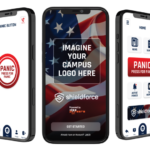Prompted by our nation’s highly-publicized active shooter tragedies, campuses are training a much wider range of their employees (teachers, administrators, clinicians, etc.) on how to respond to campus shootings. Although lockdown drills are important, organizations are focusing way too much attention on active shooter response at the expense of other training, drills, exercises and solutions that will save many more lives.
It’s time for us to adjust our perspective on the active shooter threat. The chances of anyone being killed by a gun at a school, university or hospital are extremely remote, and the chances of them being killed by an active shooter anywhere are even lower. A student is much more likely to die on his or her way to or from school or suffer a life-threatening injury while playing interscholastic sports.
For a campus to truly improve safety and security, the topics that non-public safety employee training should cover include:
- Mental health: Staff must learn how to identify and respond to students, patients, parents, visitors and other employees who are struggling with depression, suicide ideation, addiction and more. Since most active shooters struggle with mental health issues themselves (they are a very small subset of the much larger number of individuals who experience mental illness), mental health training will also help to address campus shootings.
- Medical emergencies: Bystanders should know how to administer medical treatment to individuals experiencing health crises in the critical minutes after an incident and before first responders arrive on scene. Common medical risks include cardiac arrest, choking, drowning, opioid overdose, anaphylaxis, and major trauma and bleeding.
- Workplace violence: Staff should learn how to recognize, respond to and report these incidents, which happen frequently in hospitals, but also occur on college and K-12 campuses. Domestic/dating violence should be included in any workplace violence program.
- General and specific student supervision: Appropriate student supervision addresses student behavior and can help reduce bullying, harassment and intimidation, as well as non-custodial parent issues. Supervision training can also address lab, shop and locker room safety issues, as well as students crossing a busy street or even students with individualized education plans who are experiencing challenges.
- Verbal de-escalation: Employees who receive this type of training learn how to de-escalate a situation before it becomes physically violent. Such training includes developing empathy for the individual acting out, avoiding exhibiting non-verbal cues that could be threatening, setting and enforcing reasonable limits and more.
- Sexual violence: There is an extremely high rate of sexual assault, rape, sexual harassment, stalking and domestic/dating violence on campuses. Employees should be trained how to identify this type of violence, receive a report of an incident and pass that information on to the proper administrators and/or authorities.
- All-hazards incident response: There are a wide variety risks a campus could face — a tornado, earthquake, fire, lightning, Hazmat issues, someone carrying a knife or hammer who is making threats, a crime that happens off-campus that comes onto campus, etc. Staff members should learn how to think on their feet to effectively address safety and security issues that often fly under the radar.
Another point to consider when developing training programs is for them to focus on health and happiness rather than use scare tactics that could create a self-fulfilling prophecy. Truth be told, schools, universities and hospitals are very safe places. All training programs — but particularly ones that deal with mental health, workplace violence, student supervision, verbal de-escalation and sexual violence — should create a campus climate and culture that encourages mutual respect and a healthy environment for everyone.
Organizations that focus on these seven types of training (which, by the way, can also help them prevent and respond to active shooter situations) will be better prepared to address the safety and security problems they are most likely to face. This is not to say that active shooter/lockdown drills shouldn’t be a component (and we’ll be providing lockdown/active lethal threat training at all three of our Campus Safety Conferences this summer), but they should in no way dominate campus safety training efforts.
Additionally, trainers need to use common sense and minimize the potential for trauma that training exercise participants might experience. For example, teachers from an Indiana elementary school who were participating in active shooter drill in January say that sheriff’s officers made them kneel down against a classroom wall before shooting them in their backs with plastic airsoft pellets without warning.
There is no reason why this drill needed to include a mock execution. What were the officers thinking?
With the horrific details of active shooter attacks bombarding the headlines, it’s understandable why so many people believe these attacks are happening all the time. The danger with this erroneous perception is that it could lead us to abandon our common sense and invest in unnecessary training and dangerous “solutions,” such as arming non-law enforcement staff or purchasing non-code-compliant classroom barricade devices.
Instead of freaking out, making bad decisions and wearing out our non-security employees, let’s leverage the awareness that active shooter tragedies provide to really improve campus safety. Let’s keep our heads on straight, do our homework and adopt the training, drills, exercises and solutions that will have the greatest impact and save the most lives.













